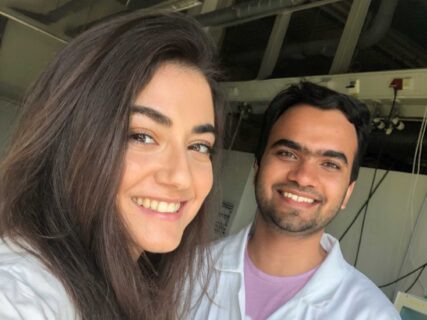Publication of insightful study on MFC by MAP students Lara Đelević and Akshat Sharma
In a recent contribution to the field of energy technology, MAP students Akshat Sharma and Lara Đelević have published an insightful study titled “Next‐Generation Proton‐Exchange Membranes in Microbial Fuel Cells: Overcoming Nafion’s Limitations” in the Energy Technology journal by Wiley. This work addresses a critical aspect of microbial fuel cell (MFC) technology, focusing on the development and evaluation of efficient proton-exchange membranes (PEMs) that play a pivotal role in enhancing fuel cell performance and reducing operational costs.
The study systematically reviews the challenges associated with Nafion, the predominant PEM material, which include environmental impact, cost, and performance inefficiencies. It then explores alternative PEMs, identifying sulfonated aromatic hydrocarbons, especially sulfonated polyether ether ketone, as promising candidates due to their scalability and commercial potential. The research also considers the application of materials such as polyvinyl alcohol, ionic liquids, and natural substances in MFCs, underscoring the necessity for evaluating long-term stability and economic viability of these alternatives through standardized metrics like power-to-cost ratio and normalized energy recovery.
This research initiative was enabled through the support of the Advanced Materials and Processes (MAP) program at Friedrich-Alexander-Universität Erlangen-Nürnberg. Acknowledgments are extended to Elsevier, John Wiley and Sons, and the Royal Society of Chemistry for the permission to reproduce key figures in the publication, enhancing the study’s breadth and depth.
Appreciation is also conveyed to the extremely supportive MAP Office staff – Dorothea Herget, Sandra Schindler, Anja Baier and Dagmar Senft – and professors Nicolas Vogel and Katharina Herkendell without who fulfilling the dream of publishing a paper would not have been possible. Moreover, a special acknowledgment is made to the authors’ families: Lara’s parents, Željka Đelević Medin & Saša Đelević, and Akshat’s family, including his parents, Rajiv and Deepshikha Sharma, and sisters, Shubhangi and Malvika Sharma. Their unwavering support stands as the cornerstone of this achievement. In reflecting on their journey, the authors recognize their parents as their most substantial pillars of support, for which there are no adequate words to express their gratitude.
To all our readers, we extend our sincerest gratitude for taking the time to engage with our work. For those who wish to read our study, here is the DOI of our article: http://doi.org/10.1002/ente.202301346
Thank you so much for your time and attention.
By MAP students Lara Đelević and Akshat Sharma (matriculation group 2021)

